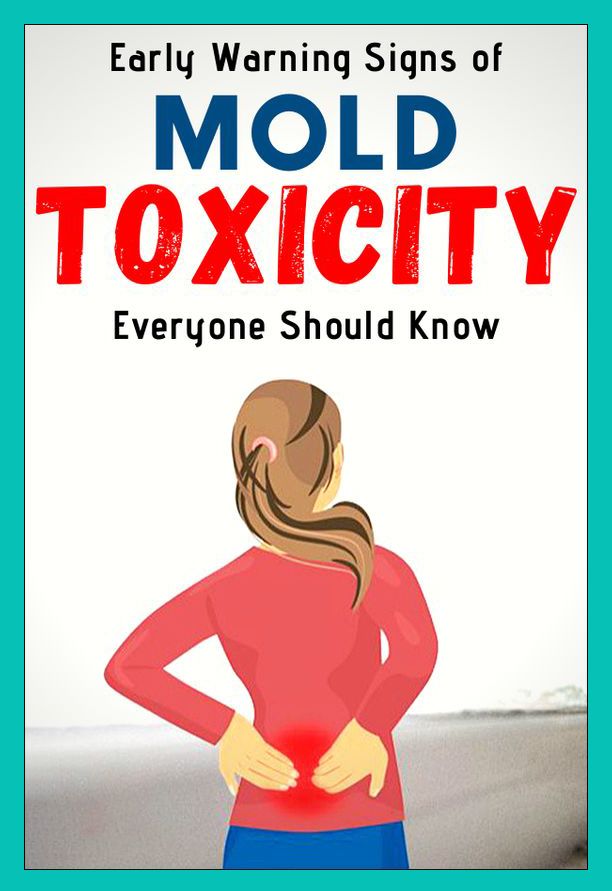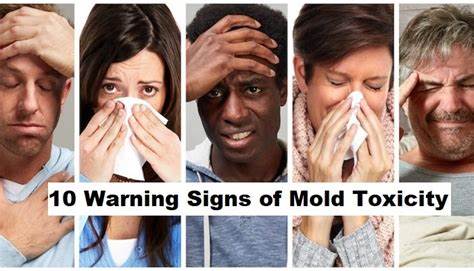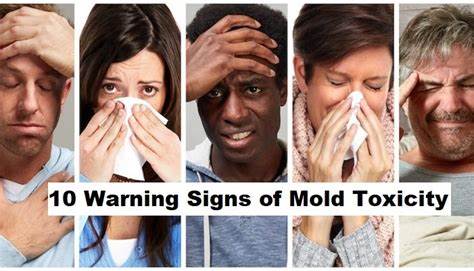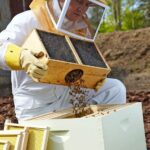What You Need to Know
Mold toxicity is a serious health issue that can affect many aspects of your life. Understanding the 10 warning signs of mold toxicity is crucial for maintaining a healthy living environment. Mold toxicity can lead to a variety of health problems, and recognizing the symptoms early can help you take action before things worsen. In this article, we will explore these 10 warning signs in detail, providing you with the information you need to protect yourself and your loved ones.

What is Mold Toxicity?
Before diving into the warning signs, it’s essential to understand what mold toxicity is. Mold toxicity occurs when mold spores produce mycotoxins that can be harmful to human health. These toxins can cause a range of symptoms, especially in individuals with weakened immune systems, respiratory issues, or allergies. Mold toxicity is often linked to prolonged exposure to moldy environments, which can be found in damp, poorly ventilated areas of your home or workplace.
The 10 Warning Signs of Mold Toxicity
1. Persistent Respiratory Issues
One of the most common warning signs of mold toxicity is persistent respiratory problems. If you experience ongoing coughing, wheezing, or shortness of breath, mold could be the culprit. Mold spores can irritate the lungs and airways, leading to chronic respiratory conditions.
2. Unexplained Fatigue
Feeling unusually tired or fatigued without a clear cause is another sign of mold toxicity. Mold exposure can lead to chronic fatigue as your body works hard to combat the toxins. If you’re constantly exhausted despite getting enough rest, mold toxicity may be a factor.

3. Frequent Headaches
Frequent headaches are a common warning sign of mold toxicity. Mold spores and mycotoxins can cause headaches by triggering inflammation and irritation in the body. If you experience regular headaches, especially in areas with visible mold growth, it’s important to consider mold toxicity as a potential cause.
4. Skin Irritations
Mold toxicity can also manifest as skin irritations. Rashes, itching, and hives are common symptoms that may indicate exposure to mold. If you notice unexplained skin problems, especially in a moldy environment, it’s worth investigating further.
5. Allergic Reactions
Mold can trigger allergic reactions, which are significant warning signs of mold toxicity. Symptoms such as sneezing, runny nose, itchy eyes, and throat irritation can be exacerbated by mold exposure. If your allergy symptoms worsen indoors, mold toxicity could be the reason.
6. Sinus Congestion and Infections
Sinus congestion and recurrent sinus infections can be another sign of mold toxicity. Mold spores can irritate the sinuses, leading to inflammation and infection. If you frequently suffer from sinus issues and have been exposed to mold, it may be time to address the problem.
7. Cognitive Difficulties
Cognitive difficulties, such as memory problems, confusion, and difficulty concentrating, can be linked to mold toxicity. Mycotoxins produced by mold can affect brain function and lead to cognitive impairments. If you’re experiencing mental fog or other cognitive issues, mold toxicity should be considered.
8. Digestive Issues
Mold toxicity can also impact your digestive system. Symptoms such as nausea, vomiting, and diarrhea may arise from mold exposure. If you have unexplained digestive problems and suspect mold, it’s important to seek medical advice.
9. Muscle and Joint Pain
Muscle and joint pain are less commonly recognized symptoms of mold toxicity but can be significant. Mold exposure can cause inflammation in the body, leading to muscle aches and joint pain. If you experience these symptoms alongside other signs, mold toxicity might be a contributing factor.
10. Unusual Odors in Your Home
Lastly, an unusual, musty odor in your home is a strong warning sign of mold presence and potential toxicity. Mold often produces a distinct smell, and if you notice this odor consistently, it may indicate a mold problem. Addressing the source of the odor can help prevent further exposure to mold toxins.
How to Address Mold Toxicity
Recognizing the warning signs of mold toxicity is the first step in addressing the issue. Here are some actions you can take:
1. Inspect Your Home
Conduct a thorough inspection of your home to identify any visible mold growth. Look in areas prone to dampness, such as bathrooms, basements, and under sinks. If you find mold, take steps to remove it safely.
2. Improve Ventilation
Improving ventilation in your home can help prevent mold growth. Ensure that areas prone to moisture, like bathrooms and kitchens, are well-ventilated. Use dehumidifiers and exhaust fans to reduce humidity levels.
3. Address Water Leaks
Fix any water leaks or plumbing issues promptly. Mold thrives in damp environments, so addressing water problems can help prevent mold growth and reduce the risk of mold toxicity.
4. Clean and Remove Mold
If you discover mold, clean it using appropriate methods. For small areas, you can use household cleaning solutions. For larger infestations, it may be necessary to consult a professional mold remediation service.

5. Seek Medical Advice
If you suspect mold toxicity and are experiencing symptoms, seek medical advice. A healthcare professional can help diagnose mold-related health issues and recommend appropriate treatment.
Conclusion
Understanding the 10 warning signs of mold toxicity is crucial for maintaining your health and well-being. By recognizing these signs early, you can take proactive steps to address mold issues in your environment. Persistent respiratory problems, unexplained fatigue, frequent headaches, skin irritations, and other symptoms should be taken seriously and investigated. Taking action to remove mold, improve ventilation, and seek medical advice can help mitigate the effects of mold toxicity and protect your health.
If you suspect that mold toxicity might be affecting you, don’t hesitate to take action. Address the problem promptly to create a healthier living space and safeguard your well-being.




